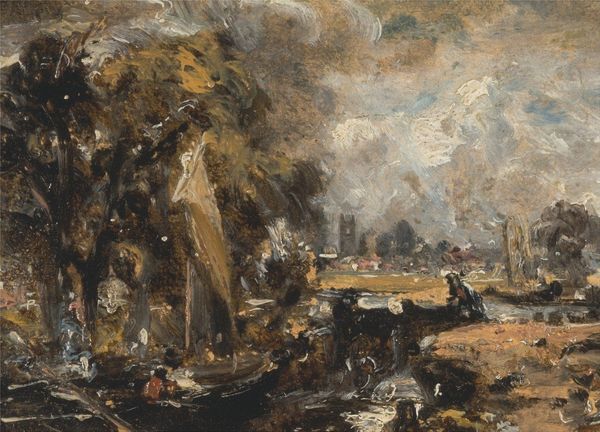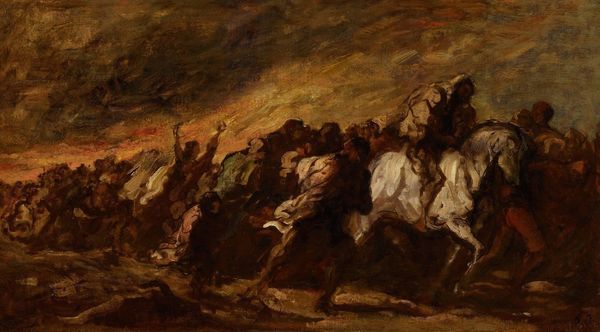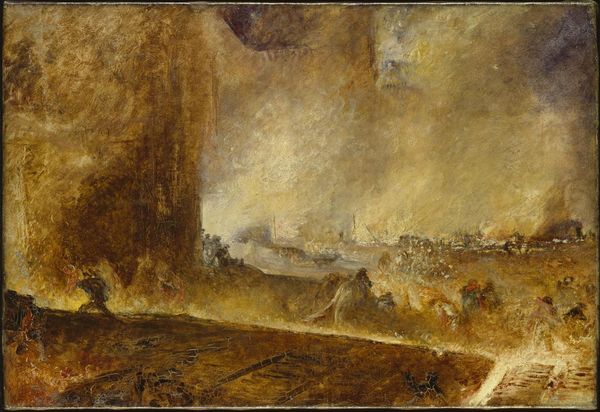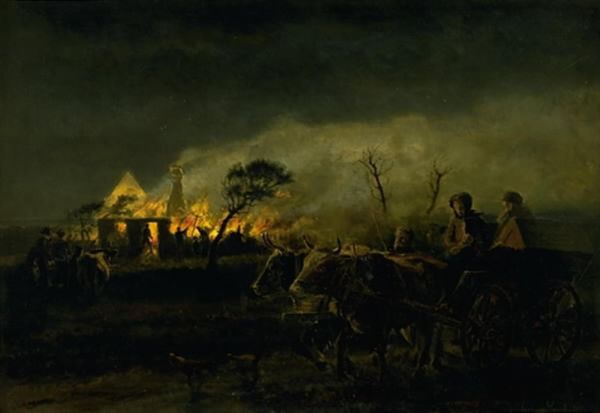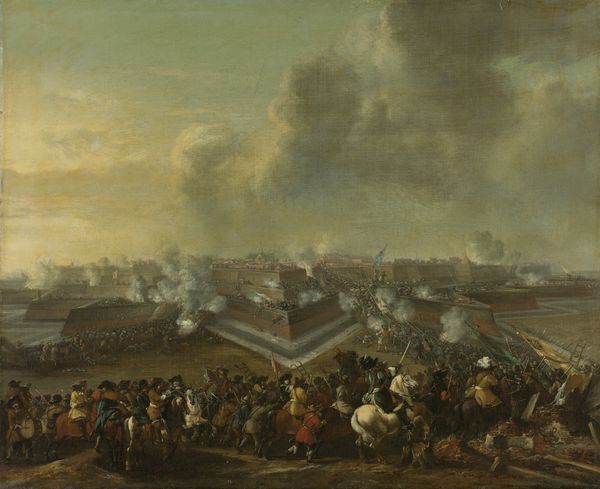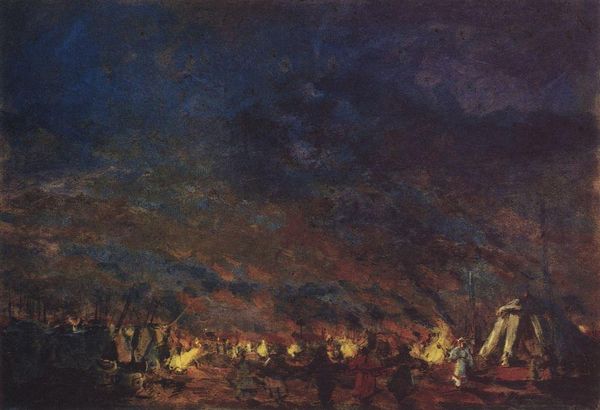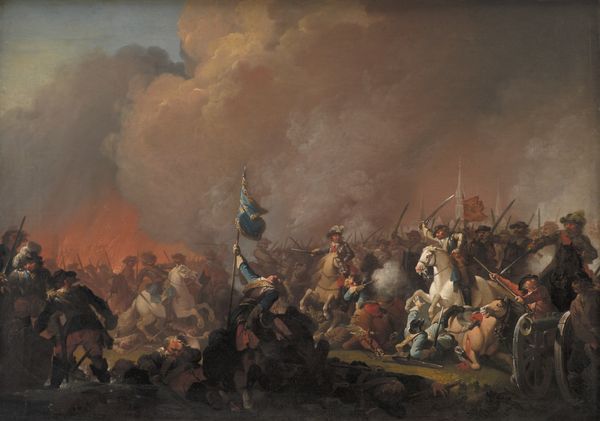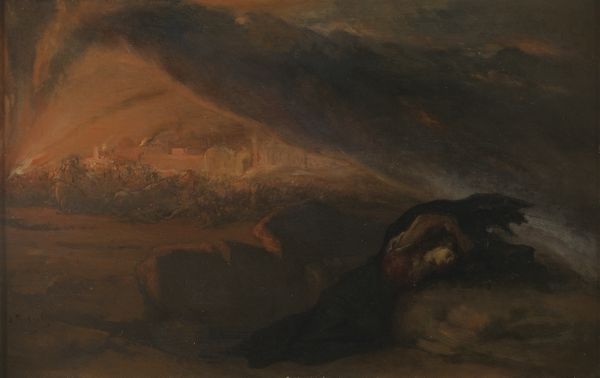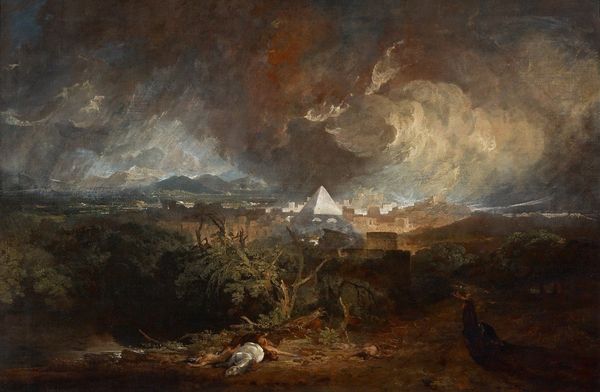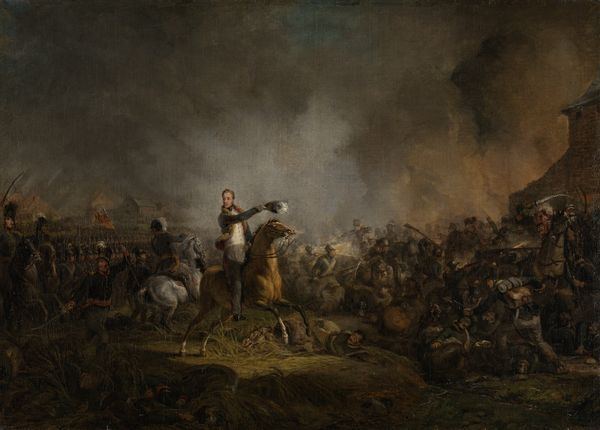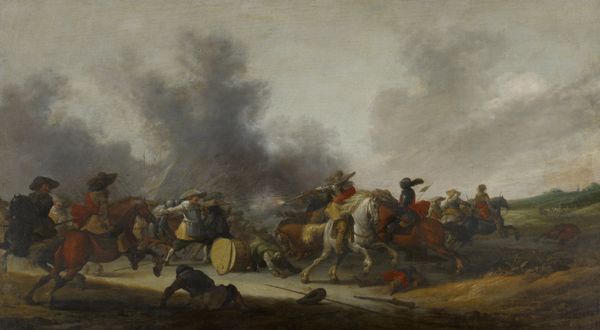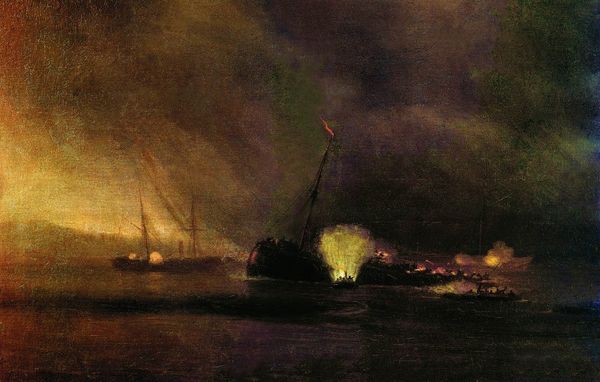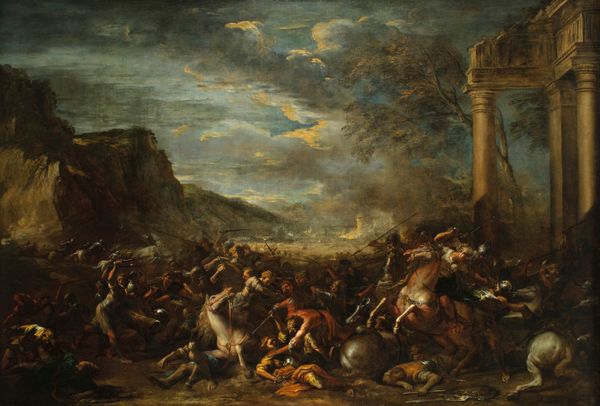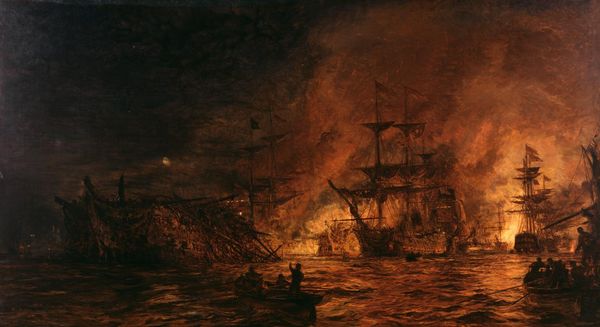
painting, oil-paint
#
narrative-art
#
painting
#
oil-paint
#
landscape
#
oil painting
#
romanticism
#
history-painting
Copyright: Public Domain: Artvee
Editor: Here we have Francisco de Goya’s “Incendio de un hospital,” created sometime between 1808 and 1812, using oil paint. The dark palette definitely gives a sense of dread. What do you see in the way the composition communicates that? Curator: Primarily, one observes a dynamic interplay between the agitated brushstrokes and the stark contrast of light and shadow. Goya establishes visual interest using impasto; consider how the application of thick paint, especially in rendering the flames and smoke, amplifies the textural drama. Do you see how that layering conveys chaos and immediacy? Editor: I do, now that you point it out. The figures in the foreground are barely defined, which also adds to the confusion. Curator: Precisely. This indistinctness forces one to focus on the materiality itself – the paint as substance and form – rather than on a literal narrative. The absence of fine detail compels one to engage with the raw emotionality embedded within the artwork's formal structure. Observe, for instance, the dominance of horizontal lines in the depiction of the stretcher contrasting with the vertical thrust of the flames. How does that juxtaposition affect your reading? Editor: I see it! It seems to emphasize the vulnerability of the people. I didn't initially focus on that structural balance. Curator: The compositional strategy of balancing darkness and light, disorder and a strange sense of rhythm reveals the subject in extremis. These formal qualities shape meaning. Editor: Thank you, this formal analysis has given me a new perspective for understanding art. Curator: It’s important to allow these aspects to unveil how art interacts, communicates, and affects the observer, one crucial detail at a time.
Comments
No comments
Be the first to comment and join the conversation on the ultimate creative platform.
